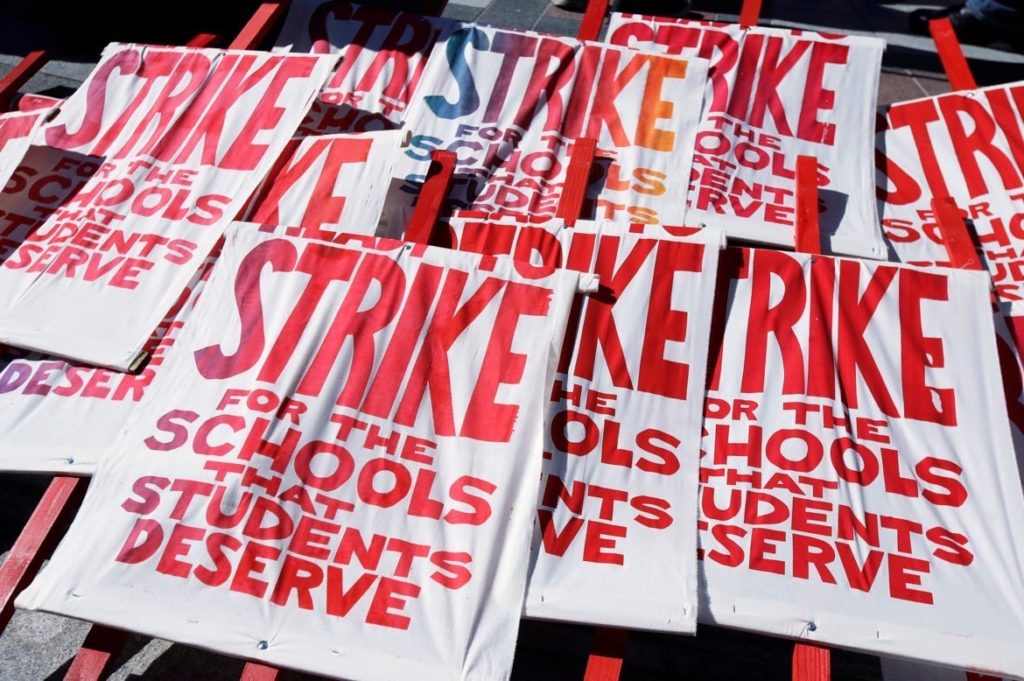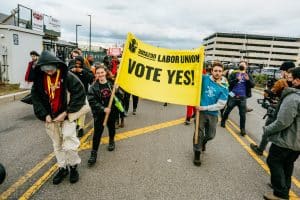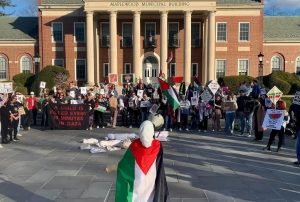On July 31, the Centers for Disease Control and Prevention released a bombshell report documenting a coronavirus outbreak in a Georgia sleep-away camp in late June. According to the report a youth counselor there tested positive for the virus just two days after the site opened. Though the camp was subsequently closed over the course of the next few days, an extraordinary 260 campers (ranging in age from 6-19 years old) tested positive for the virus.
While a sleep-away camp is admittedly a different environment than a school classroom, and while children tend to suffer far fewer complications from the virus than adults, this study, and the dozens of other examples that have been pouring in for weeks — including a massive outbreak in Israeli schools — show conclusively that children can be a vector for the transmission of the disease. And considering that U.S. infection rates and death rates (some of the highest in the world) have increased almost fourfold since June, it is likely that reopening schools for face to face teaching in the fall and keeping them open could lead to tens of thousands or even hundreds of thousands of otherwise avoidable deaths.
Despite these obvious risks, not a single state, even those where infection rates are soaring, has yet to close down schools next semester. Florida, Texas, and Alabama, for instance — three states where infection rates have been increasing — are all planning for statewide reopenings. Meanwhile, in Georgia, where hundreds of school employees have already tested positive, photos are being released of packed hallways and scant use of masks. This reckless push to reopen schools, despite skyrocketing infection rates, is in part the result of an aggressive push by the Trump administration to force states and local school districts to open by threatening to withhold federal funds from those that do not. Meanwhile, Trump is using Immigration and Customs Enforcement to blackmail U.S. colleges and universities into holding face to face classes in the fall. Earlier this month, ICE announced that any international students taking only online courses would be subject to deportation, a decision Trump later walked back.
The Trump administration, in lockstep with local Democratic and Republic politicians, are pushing aggressively for schools to reopen because the ruling class’ profits depend on it. In fact, the ruling class’ lackeys in the media say as much in the pages of their newspapers. Earlier in the pandemic, an article in the billionaire-owned Bloomberg pointed out that public primary schools are effectively daycares for the working class. Without them it will be much harder to force parents back to work. Quoting the Brookings Institution, it points out that just “a one-month closing of all U.S. schools could cost the economy more than $50 billion in lost productivity, or 0.2% of GDP.” Colleges and universities are also major contributors to their local and state economies. In Philadelphia, for example, four of the 20 biggest employers are universities. Reopening higher ed means sending workers and students back to an industry that generates $670 billion annually.
While most teachers would love to return to face to face instruction as soon as possible, the fact is that it is just not safe. To avoid another major outbreak, teachers, alongside their fellow education workers and students, must use their power to ensure that they have the resources they need to teach effectively and safely and that no school is opened until it is absolutely safe to do so. In Chicago this week, public school teachers called for a strike authorization vote to protest school openings, and in less than a day, the Chicago Public Schools announced they would go fully online in the fall. This action shows that strikes, or even just the credible threat of a strike, can win major concessions. However, avoiding a massive new outbreak and ensuring that working people have the resources they need to weather this crisis will require more than shutting down this or that unsafe school or district. With the new school year looming, teachers have the leverage to shut down unsafe schools across the entire country and shape all aspects of the discussion around the nation’s response to the pandemic. A nationwide teachers strike for safe schools that includes a bold set of demands for the entire working class could reshape the terrain of workers’ struggle in the current crisis and for years to come.
A Strike for the Whole Class
After decades of budget cuts, low wages, and crowded classrooms, teachers have, since at least the 2012 Chicago public teachers’ strike, become some of the most militant workers in the United States. This was made especially clear in 2018 when West Virginia public school teachers held a statewide wildcat strike — and won major concessions — against a brutal austerity budget. The West Virginia strikes quickly became an inspiration and touchstone for other teachers’ unions across the country who were facing similar cuts, which led to a nationwide wave of teachers’ strikes that spread to Los Angeles, Colorado, Arizona, North Carolina, Oklahoma, and several other cities and states. As a result, these strikes became perhaps the most successful and powerful response by workers in decades to the ruling class’ neoliberal assaults on public workers and institutions.
Most of these actions were not supported by local union leaderships, but were led almost entirely by rank and file teachers; local leadership only hobbled along after it became clear that workers were taking matters into their own hands. Yet despite the incredible power and potential of these strikes, neither the National Education Association (NEA), nor the American Federation of Teachers (AFT), two of the biggest teachers’ unions in the country, took any concrete actions to help build a continued nationwide strike wave. Rank-and-filers — and their reluctant local leadership — were largely left to fight for themselves without the support of an organized national movement.
Teachers in universities and colleges have also been targets of neoliberal assaults like budget cuts, the precaritizing (adjunctification) of the vast majority of faculty jobs, and poverty wages. Worker and student struggles in higher education have so far been nowhere near as militant and widespread as those in public primary schools, but that is changing. Graduate worker unions at Columbia, the New School, and UC Santa Cruz, for instance, have all staged high profile strikes over the last two years. Meanwhile, new unions for the most contingent faculty, adjuncts and graduate students, are being formed every year, and radical rank and file organizations, such as Rank-and-File Action (RAFA) at CUNY and Member Action Coalition (MAC) at the State University of New York are building militant grassroots unionism to fight for higher pay and better conditions for faculty and students. Still, the assault on higher education amid the economic and health crisis has been brutal, with CUNY slashing 2,800 adjunct jobs, and with administrators at UNC calling for “budget cuts from 25 to 50 percent.” And, of course, like primary and secondary schools, colleges and universities are also facing enormous economic and political pressures to reopen. These conditions demand a widespread, radical worker response.
Now, in the midst of the fight over reopening, the AFT, representing teachers in primary, secondary, and higher education, has tacitly come out in support of the idea of strikes by its locals. At a national conference on July 28, Randi Weingarten, president of the AFT, said that the union would “use every action and tool available” to stop unsafe schools from reopening, including “supporting local and/or state affiliate safety strikes on a case-by-case basis as a last resort.” This is a positive step and has successfully raised the spectre of teachers’ strikes in the national media, but Weingarten’s highly-qualified statements make clear that the leadership of the AFT has no real interest in supporting, or even defending, local strikes except as “a last resort,” and that they have no plans to organize a national action of any kind, much less a nationwide strike.
Instead, the AFT leadership, like many other union bureaucracies, is pursuing a legislative lobbying strategy, exchanging militant action for the chance of having a “seat at the table” of bourgeois law in order to negotiate what qualifies as “safe.” Still, the concession that local strikes would be supported on a “case by case basis” shows that the union leaders believe widespread teachers’ strikes are likely inevitable. And they are not alone. Even in a state like New York, where public sector strikes are illegal, governor Andrew Cuomo is feeling the heat, and has been forced to openly state that he wants to avoid a strike, since he knows that teachers will not show up if schools are not safe.
It is clear that the ruling class fears the power of teachers. This is in large part because they are an essential part of the social reproduction of capitalism. By providing young people with hours of childcare every day, as well as the skills and knowledge needed to participate in the economy, public school teachers — who are 76% women — are a vital part of the daily functioning of capitalist society. This means they have the power not only to shut down their schools, but to disrupt entire economies. And that power is maximized when teachers reject the narrow silos imposed on them by their trade unions, instead organizing alongside all of their fellow education workers as well as their students and the broader working class. In West Virginia for example, teachers carefully built up student support for their strike to prevent students being used to break the morale of strikers. They also organized alongside bus drivers and janitors, which made it much harder for the bosses to break the strike with scabs.
And because of their connections to parents and communities, teachers are also uniquely positioned to bring together various sectors of the working class as conduits of wider class struggle. Local strikes are important, and while they could win some meaningful gains and force local and state governments to reconsider re-opening, particularly in large states like New York, California, and Texas, just shutting down schools is not enough. Working parents and families are hurting — especially now that expanded unemployment benefits and eviction moratoriums are ending. Many are being forced to choose between their children’s safety and their financial security; without the regular childcare that schools provide, it is difficult for most working parents to maintain their incomes while also taking care of their children full time.
Therefore, any national strike to shut down unsafe schools must necessarily also involve a broad national platform of demands for teachers as well as the students and families that they serve. In addition to demanding safe reopening plans decided on by teachers and staff, guaranteed PPE, hazard pay, and adequate funding for schools and teacher salaries, this program must include at a bare minimum: extended and expanded unemployment benefits for all, substantial subsidies and expanded guaranteed work leave for working parents who need to stay at home with their children, massive investments in education from kindergarten to graduate school in every state (paid for by taxes on the wealthy), the cancellation of rent and a permanent moratorium on evictions, universal public health care, expanded testing and contact tracing, and a vastly expanded relief package for all working people, including immigrants and the unemployed.
And that program must also confront head on the problem of police violence. Police terrorize primary and secondary school students in order to secure the school-to-prison pipeline. They exist to harass, attack, kill, and intimidate the Black and Brown communities that many public educators are part of and serve. In higher education, cops are the shock troops of gentrification, wielding deadly white supremacist violence to clear the way for the endless expansion of campuses. At the same time, vast sums of money are tied up in cities’ militarized police forces rather than put to use for health care and education. And of course cops are the strong arm of the ruling class against strikes. They have been used many times before, and will be used many times again, to break up strikes — especially now, when the bosses are reeling from the economic crisis and desperate to restore their profits. The fight for safe schools, then, also requires an uncompromising fight to kick all cops out of our schools and out of our unions. Ultimately this means fighting to overthrow the capitalist system that can’t survive without cops.
Building and eventually winning such a program will require nothing less than a coordinated national strike of teachers alongside their coworkers, with the support of their students and surrounding communities.
Beating the Bureaucrats, Building the Strike
While it’s clear that a national strike of teachers is long overdue, it’s also clear that union leaders like Weingarten are unlikely to call for such a strike without a lot of pressure from the rank and file. Union members therefore must use every opportunity at their disposal to force these leaders to build more militant actions, but they must also be prepared to organize their fellow workers independently of the leadership when needed.
The bureaucrats that lead unions are far removed from the daily workplace struggles of their members. They exist to negotiate a few concessions from the bosses in exchange for the promise to keep their own members in line and working dutifully without interruption. This is why so many union leaders have been willing to agree to and enforce “no strike” clauses in contracts, attempting to rob workers of their most powerful weapon. Union bureaucrats typically fight their own members when those members try to shift the balance of power between bosses and workers — serving as the “economic police” of the working class. Therefore, pushing unions to join in a national teachers’ strike requires rank-and-file members to unite in bottom-up organizations or caucuses: both to push bureaucrats into organizing far more radical actions, and to take independent mass action when necessary.
All too often, though, these rank-and-file organizations and caucuses are disconnected from one another and left to constantly reinvent the wheel. Meanwhile, atomized caucuses that have no connections outside of their unions face huge pressures to conform to business as usual, since union leaders constantly threaten to coopt or destroy them. While there has been some good work accomplished in the direction of addressing this problem — Labor Notes, for example, has been organizing a small group of public higher education workers across the country through regular conference calls — building a national teachers’ strike will require something much bigger and more ambitious. That means developing a national network of rank-and-file caucuses that are committed to a program of fighting for the working class and against the bureaucrats, one that is capable of drawing the lessons and creating the real solidarity needed to build coordinated and national actions.
The fall is on its way, and with it the chance to deal a powerful blow against the bosses and their allies. Teachers can and must help lead this fight. Now is the time to build for a national teachers’ strike.











